Looking to buy your first telescope but don’t know where to start? We’ve picked out some of the best beginner telescopes on the market.
The best telescopes for beginners are those that are easy to set up, won’t stretch your budget and yet give you great views of night sky targets.
But if you’re starting out as a newcomer to astronomy, it can be difficult to know what to look for when buying your first telescope.
Beginners face a seemingly daunting array of different types of telescope, different brands and different price ranges.
It can be difficult to wade your way through the jargon of practical astronomy and work out which is best suited to your observing needs.
There is one simple thing to consider when buying your first telescope, and that’s making sure you get an instrument you’ll actually use.
Jump to: How we test the best telescopes for beginners
The best telescopes for beginners are easy to use and set up.
If your first telescope is too large and unwieldy or requires a lot of tinkering, you’ll be put off.
You may find it difficult to transport and your scope could be consigned to the garden shed or garage, never to be used again.
Join your local astronomy society, attend a star party or find your nearest astronomy kit stockist.
Speak to people who know best, and you may even get the chance to try before you buy.
Have a look at our pick of some of the best telescopes beginners below.
For more detailed help you can also read our guides to choosing your first telescope and how to spend your first night with a telescope.
If you think you might be interested in learning how to image the night sky, read our guide to the best telescopes for astrophotography.
If you’re on the lookout for a mount to go with your new telescope, read our guide to the best telescope mounts available.
18 best telescopes for beginners
Skymax-127 Virtuoso GTi tabletop telescope

Tabletop telescopes are among the best telescopes for beginners because of their light weight and easy set-up. Simply put them on a table or sturdy surface and they’re ready to go.
The Sky-Watcher Skymax-127 Virtuoso GTi is a compact telescope with a Wi-Fi-controllable Go-To mount, meaning you can observe chosen targets at the touch of a button.
Its long focal length makes it ideal for observing the Moon, planets and double stars, as well as some brighter deep-sky objects.
Read our full Skymax-127 Virtuoso GTi tabletop telescope review.
Celestron StarSense Explorer DX 130AZ 5.1-inch
Buy from B&H, Amazon, Picstop and Clifton Cameras
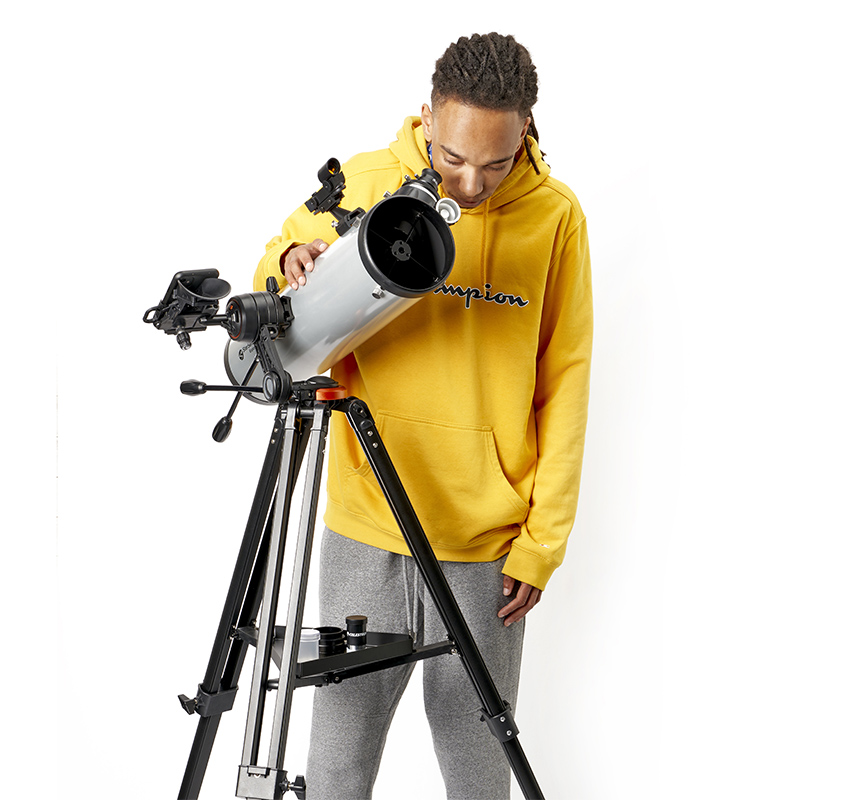
Computerised Go-To telescopes automatically located night-sky objects that a beginner might otherwise struggle to find, but they do still need to be aligned.
For beginners, this can be tricky, often involving the use of a smartphone app to navigate the night sky, so why not use the same app to align the telescope?
Celestron’s StarSense Explorer app is at the core of how this combination works.
Also included with the DX 130AZ are two 1.25-inch eyepieces, 25mm and 10mm, which give 26x and 65x power, respectively. These will serve beginners well.
When you first begin your session, the app asks you to point the telescope towards a clear patch of sky with stars and wait for the red bullseye on the screen to turn yellow.
Then you follow the directions to your target, wait for it to turn green and look through the eyepiece.
We loved the twin-knobbed, low-gear focusing control and we were able to quickly achieve sharp views of the Moon’s cratered southern highlands.
The StarSense app also has lists such as ‘tonight’s best objects’, each labelled ‘City Viewable’ or ‘Dark Sky Viewable’, helping beginners manage expectations.
Read our full Celestron StarSense Explorer DX 130AZ 5.1-inch review.
Sky-Watcher StarQuest 130P Newtonian reflector
Buy it from Wex

The Sky-Watcher StarQuest 130P Newtonian is short, which makes it a nice, easy scope for beginners to handle. Plus, it weighs just 8kg and is easy to assemble. This means it’s a great choice for newcomers but also, for more experienced astronomers, it’s not as likely to get left in storage and remain unused.
The 130P Newtonian may not be an imaging telescope, but we did manage to attach a smartphone adaptor to the 25mm eyepiece and were able to use our iPhone to capture an image of the Moon.
The StarQuest 130P is easy to use, and it’s well-made. As a result, it’s great choice for first-time stargazers, but could also work as a grab-and-go scope for more experienced observers.
Read our full StarQuest 130P Newtonian review.
Acuter Voyager MAK80 telescope

The MAK80 is compact and is suited for a range of uses, including birdwatching as well as practical astronomy.
The tube is just 270mm long and the telescope’s focal length is 800mm, giving a focal ratio of f/10.
This makes it well-suited for observing the planets, the Moon and double stars.
The MAK80 comes in a box with a soft carry case, an 8x 21mm finderscope and two eyepieces, 20mm and 10mm, giving magnifications of 40x and 80x.
Included is also a phase-coated 90˚ roof prism star diagonal and a smartphone holder, should you wish to photograph what you’re observing and share it on social media.
Read our full Acute Voyager MAK 80 telescope review.
Celestron StarSense Explorer LT 70AZ refractor
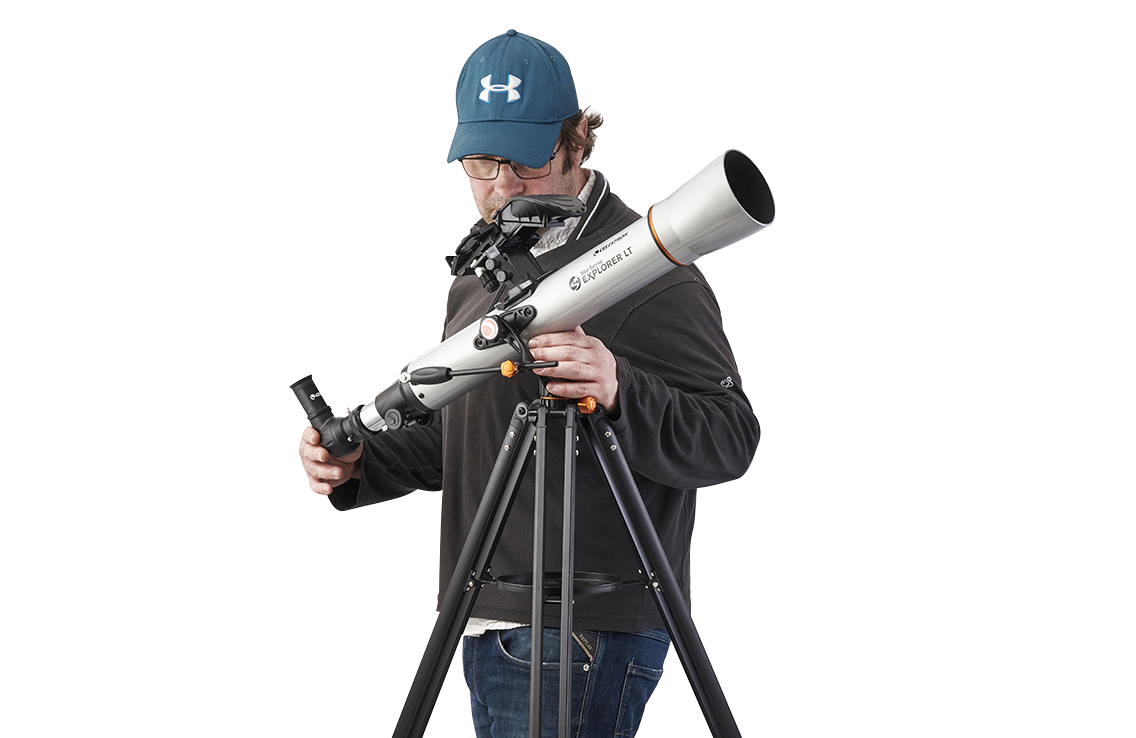
The StarSense Explorer phone dock, which incorporates a smartphone holder and a mirror, turns this simple, basic manual telescope into one that can easily locate objects via a touchscreen phone and the StarSense app.
This is a sturdy, reliable refractor that’s good value for those beginning their adventure in amateur astronomy.
Read our full Celestron StarSense Explorer review.
Sky-Watcher Heritage 100P Tabletop Dobsonian

This compact, lightweight scope is easy to store and convenient for bringing out at a moment’s notice once the clouds clear. You could even place it on a sturdy patio table during your observing sessions. Importantly, the scope also gives good views of a range of celestial wonders; particularly the planets. This would be an ideal first telescope for a budding young astronomer.
Read our full Sky-Watcher Heritage 100P review
Celestron Omni XLT AZ 102 refractor with basic mount
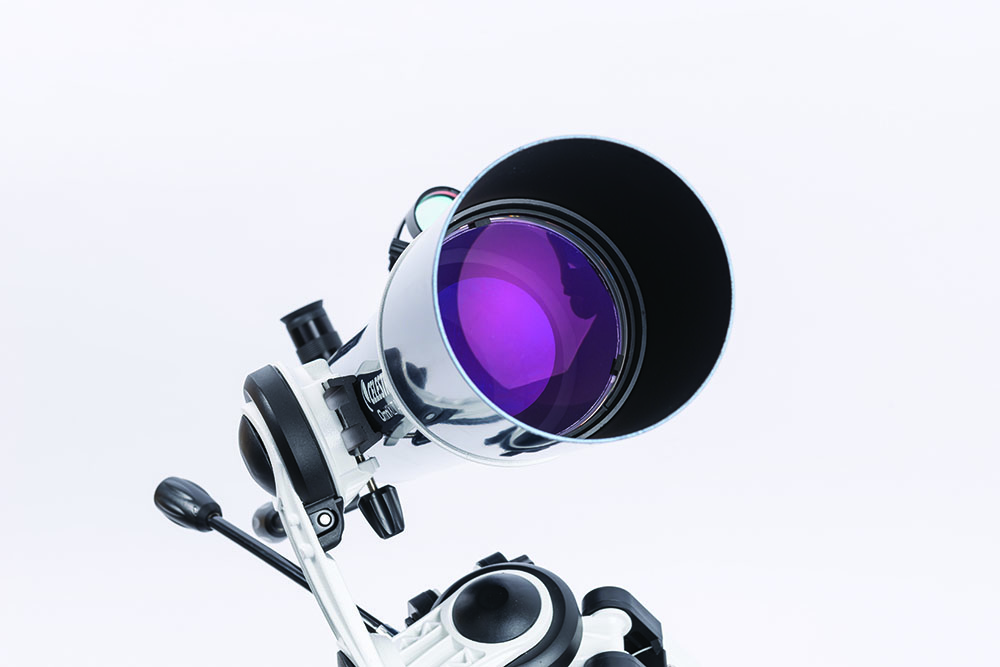
This scope comes with a finderscope, diagonal, eyepiece and mount that boasts slow-motion controls. Setting it up is relatively quick and easy due to the mount and tripod coming pre-assembled. All you need to do is attach the telescope to the mount, add the diagonal and eyepiece and you’re ready to go. It offers pin-sharp views of stars and galaxies and, weighing just 6.2kg, can be easily moved around your viewing spot or taken on trips to dark-sky sites.
Read our full Celestron Omni XLT AZ review here
Bresser Messier AR-80/640 AZ NANO Telescope
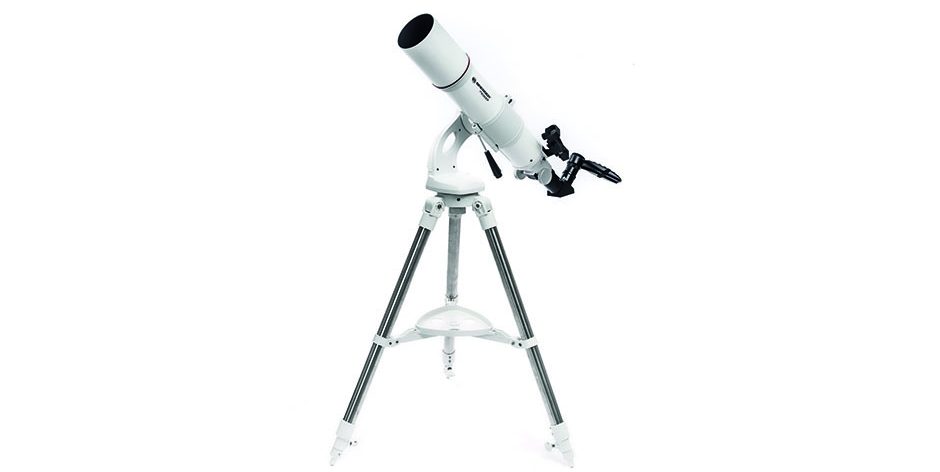
This 3-inch telescope enables observations of a wide range of celestial objects and comes with an altaz mount that’s intuitive to use. The whole package is a doddle to set up. An aluminium dew shield cuts down on unwanted light and keeps dew at bay, while the supplied red dot finder makes locating bright celestial objects easy. Emphasis is on lightweight materials, making it a good ‘grab and go’ instrument to encourage beginners to leave the light pollution behind and head for a dark-sky site.
Read our full Bresser Messier AR-80/640 review
Celestron Inspire 100AZ Refractor

Celestron’s Inspire range of refractors are made with the beginner in mind, but the 100mm version is our pick. It’s a classic telescope and easily one of the best telescopes for beginners. It offers a good aperture, a focal length of 660mm and plenty of features. The scope would appeal to younger astronomers as it’s affordable and attractively designed. It comes with a tripod, 2 eyepieces, a diagonal and a red light LED torch. One particular bonus is its smartphone adaptor: ideal for those thinking about getting started in astrophotography, or for sharing your observations on social media.
Read our full Celestron Inspire 100AZ review
Meade Lightbridge Mini 130 Dobsonian

Tabletop telescopes are an obvious choice for a list of beginners’ scopes, and with the Lightbridge Mini 130 you can be viewing in minutes. No tripod, mount or polar alignment required: just set it onto a steady garden table or even a rolling trolley for wheeling in and out of storage. What’s more, this scope comes with two eyepieces that offer a wide view for satisfying observations of a range of targets.
Read our full Meade Lightbridge Mini 130 review
Sky-Watcher EVOSTAR-90 (AZ PRONTO) with mount

There’s a saying in amateur astronomy: the best kind of telescope is the one you’ll actually use. The Evostar-90 AZ is simple to assemble and, at a combined weight of 6.25kg, light enough to lift. Its AZ Pronto mount and tripod system is easy to use: locking clamps can be loosened to move it manually, and there are slow-motion controls to help you fine-tune onto targets. The tripod has an adjustable height range of 78.5-150cm, and is sturdy, helping avoid too much vibration.
Read our full Sky-Watcher EVOSTAR-90 review
Sky-Watcher SkyHawk 1145P SynScan altaz Go-To Newtonian
Buy it from Wex

The Newtonian reflector has always been a popular choice for people starting out in astronomy – it offers the most aperture for your money of any optical design. Sky-Watcher’s SkyHawk 1145P is a reflecting telescope equipped with a parabolic primary mirror at a competitive price.
Read our full Sky-Watcher SkyHawk 1145P review
Celestron 114LCM computerised telescope
Buy it from Clifton Cameras

Celestron’s 114LCM combines reasonable optics with a computerised mount to give beginners a tantalising taste of what there is to see in the cosmos. It’s quick and straightforward to assemble as there are just three main sections: tube, base and tripod. This scope really whets the appetite, and that’s what a beginner’s telescope is all about.
Read our full Celestron 114LCM review.
Sky-Watcher Heritage 150P Flextube Dobsonian
Buy it from Wex
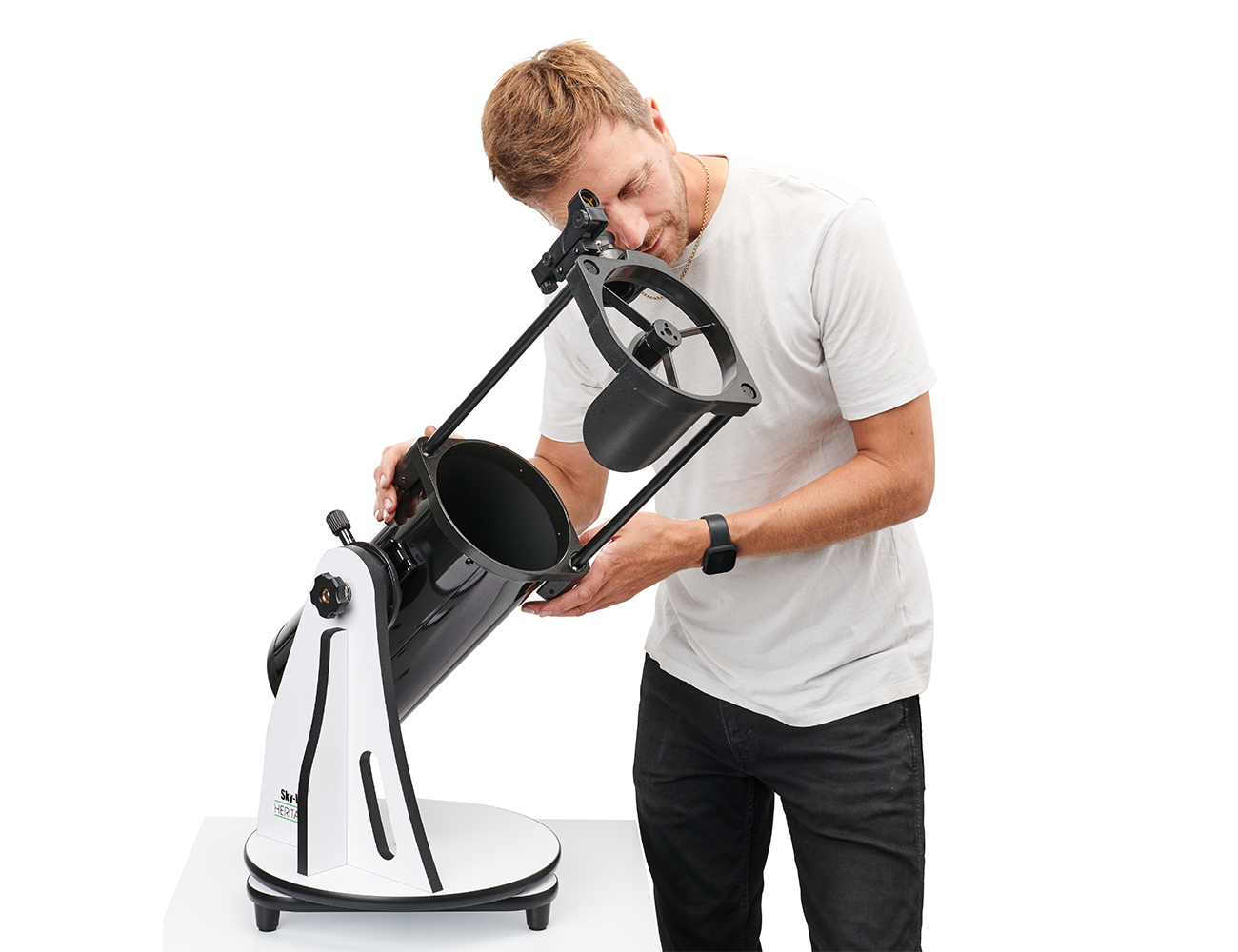
Sky-Watcher’s Heritage telescopes are portable and uncomplicated to set up, and can be simply placed on a tabletop for instant observing of the night sky. You can be stargazing in minutes, without the hassles of a more complicated system such as an equatorial mount.
At 7.5kg, the Heritage 150P Flextube is lightweight, making it great for bringing out to catch gaps in the clouds, or whisked away easily to a dark-sky site.Collapsed down, it’s easily transported and set up quickly in a dark-sky location.
Read our full Sky-Watcher Heritage 150P review.
Sky-Watcher Star Discovery P150i Wi-Fi telescope
Buy it from Wex

The Star Discovery P150i Wi-Fi can be set up and observing the night sky in about 15 minutes. Its mount takes 8 AA batteries or a 12V power tank plugged into the power port, and 2 eyepieces are supplied, of 25mm and 10mm focal length.These give nice views of deep-sky objects and the Moon.
There’s not hand controller supplied because the mount is controlled using an app that operates via an inbuilt Wi-Fi network. Once connected, this provides the ability to instantly slew to a range of celestial targets.
Read our full Sky-Watcher Discover P150i Wi-Fi review.
Starbase 80 refractor and mount package
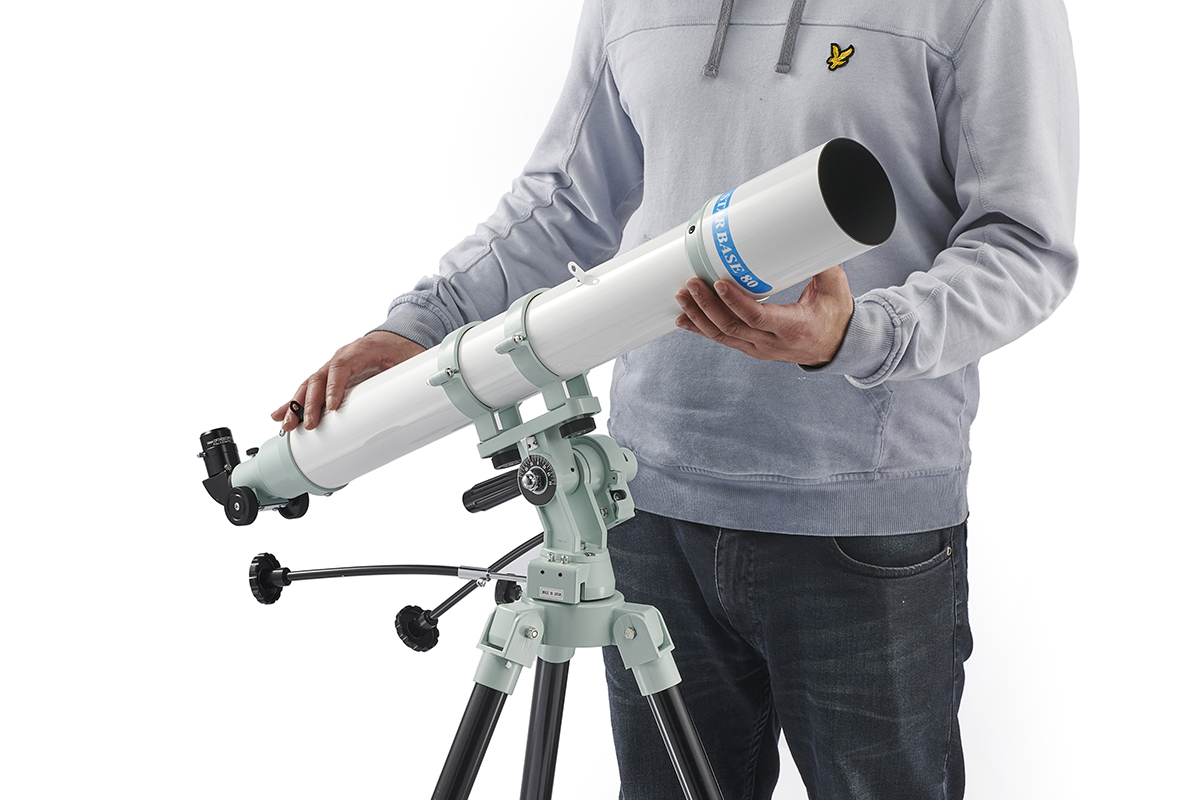
The Starbase 80 is a quality grab and go achromatic telescope suitable for entry level. It sits on a portable easy-to-use altaz mount and benefits from good optics.
Assembly is easy: with the mount and tripod in one section, you just need to attach the tube and rings, then add the slow-motion controls and altitude clamp.
Were able to locate bright deep-sky targets like the Orion Nebula and the Pleaides, and we were also able to find the hazy central bulge of the Andromeda Galaxy and several bright double stars.
We turned the Starbase 80 to the Moon and found it crisp in both the 14mm and 6mm supplied eyepieces.
This is a great beginners’ scope and mount package that will provide hours of viewing pleasure.
Read our full Starbase 80 refractor and mount package review.
Sky-Watcher Explorer 130P AZ GO-2
Buy it from Wex
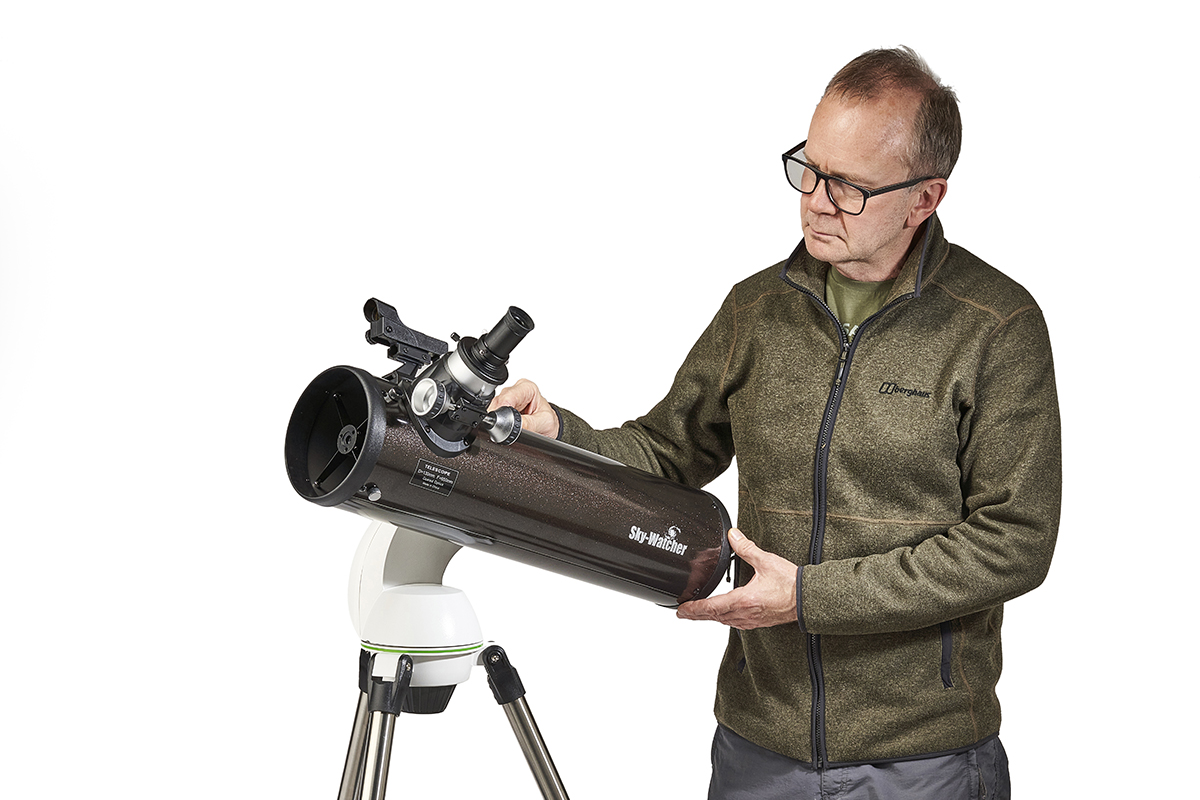
The Sky-Watcher Explorer 130P AZ GO-2 is compact enough to be portable, yet powerful enough to give great views of deep-sky objects. And, its Wi-Fi-enabled mount enables observers to seek out celestial targets using a smartphone as a controller.
Assembly is straightforward and well-explained in the printed manual, and once set-up we got great views ofglobular clusters and the Andromeda Galaxy and Bode’s Galaxy.
We observed planetary nebulae M27 and M57, the Double Cluster and the double stars Albireo and Epsilon Lyrae.
We also enjoyed Jupiter and Saturn, easily observing Jupiter’s bands and Saturn’s rings, as well as several of their moons.
Read our full Sky-Watcher Explorer 130P AZ GO-2 review
Unistellar eVscope eQuinox telescope
Buy it from Amazon USA

Most people setting out to buy their first telescope aren’t going to be wanting to spend over £2,500, but if your budget does happen to reach that high and you’re looking for a completely different experience from an ‘ordinary’ telescope, you might consider the Unistellar eVscope eQuinox.
This is a 4.5-inch, f/4 reflector with a built-in camera sensor that tracks and stacks images in real-time to produce rich images of deep-sky objects.
It’s very much a telescope for those who like their gadgets, and who can afford it.
For a complete breakdown of what it can do, read our full eVscope eQuinox review.
How we test the best telescopes for beginners
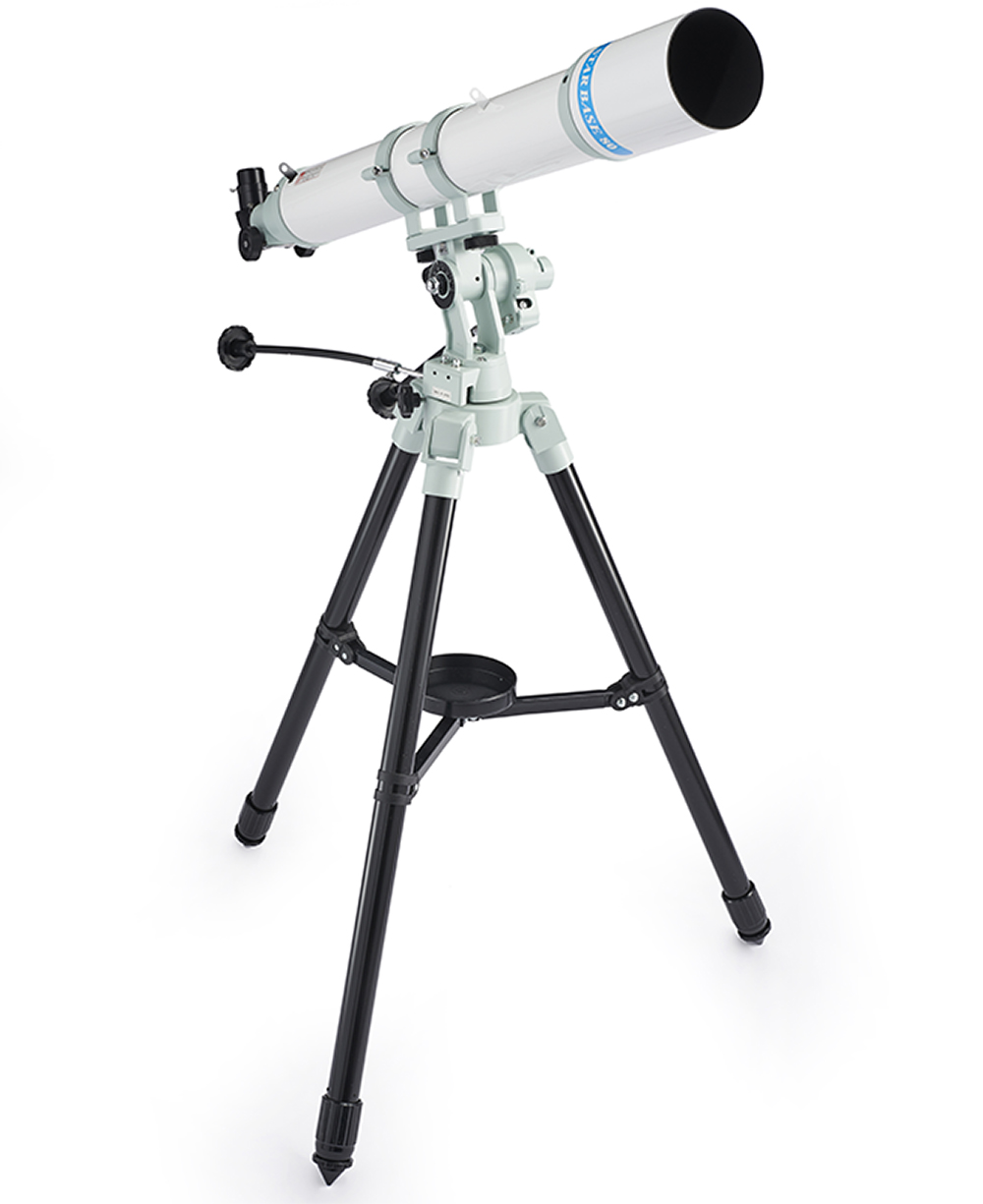
The telescopes on our list were tested using the same criteria: assembly, build and design, ease of use, features and optics. The features we looked at included:
Finderscope
Finding what you want to look at is the first step, so we examined the finderscopes supplied, testing how easy they were to use. We checked whether they were awkward to look through and if they were easy to align with the main scope.
Focuser and eyepieces
Fine focusing is vital for sharp views, but the focuser shouldn’t be too stiff or have too much play in movement. We also inspected the eyepieces to see if they provided a useful range of magnifications.
Mount
We checked that the mount was sturdy enough to support the telescope and had no play in either of the axes. The telescope should be able to move freely to take in as much of the sky as possible without being hindered by the tripod.
Optics
Optical surfaces should be free from defects, so we looked for imperfections on the front objective lens. Using the supplied eyepieces, we checked to see if the optics gave crisp views at the centre and at the edge of the field of view.
Tripod
We looked at how stable the tripod was as the telescope was moved into various observing positions. The legs need to be steady with little flexure, and any vibrations should quickly dampen down otherwise they could spoil the view.
What are your recommendations for best beginners’ telescopes? Let us know by emailing contactus@skyatnightmagazine.com or via Facebook, Twitter or Instagram.